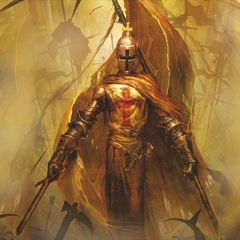On a group chat we have, the following was shared:

to this a member of the chat added a reply that was posted by someone he knows personally who is, according to him, a genius level programmer:

but then, an actual Chad, in our group, indeed called Chad, made what is without a doubt, a comment that best describes the nature of communication between our realm and the demonic that I have ever seen. I include it below because knowledge is power, and understanding what he said is definitely important.
And please don’t be so foolish as to use this information to play around in the liminal space between the demonic realm and ours, but rather as information to help you recognise potential points of intersection, and learning how to avoid them. To that end, I provide a simple example after this observation by Chad:
Those are great observations. Computers are deterministic to a fault. They are utterly incapable of doing anything other than what they are told to. Bugs, for example, are not the computer doing its own thing. They are like that children’s book Amelia Bedelia. The programmer told the computer to dress the chicken, so the computer took a chicken and put a tuxedo on it.
To do something nondeterministic like give you a random number, they have to rely on hardware to “seed” them with external noise from radiation, heat, sound, etc. They can do pseudo-random, like walking across pi to give you a “random” number, but to be truly random they need external “noise.”
Our environment is nondeterministic too, or at least appears that way. That’s why to talk to the spirits you have to use a tool that can at least ostensibly give you randomness. Dice or tarot cards or magic 8 balls or tea leaves or chicken bones or ouija boards, all random generators that you infer “messages” from.
That’s why that schizo/genius programmer Terry Davis who built an operating system from scratch called his random word generator “the voice of God.” He understood the question of “if I wanted the spirit world to interact with a computer, it would have to be through randomness.” More generally, in a way that can’t be traced back to a set of inputs and reproduced consistently.
What do we know about how the demonic interacts with the physical? Subtlety. A shadow that flickers in a corner. A cup that tipped over on its own. They do it in a way that you can convince yourself that something deterministic happened. No demon is jump scaring anyone with a flashlight under his face. In the scariest movies, the straight-to-TV flops give you a CGI of the demon right at the beginning. In the classic scary movie, you never see the monster. It “could” just be your imagination. That’s ten times scarier because that’s how evil actually works.
Now apply that to AI. It’s a new way to get non determinism. You ask it to generate an image. Is anyone able to step through the algorithm with a debugger to see how it got that image? No. It’s a complete black box. The “noise” is massive amounts of data. If it was even possible, it would take a human 1000 years to “debug” how it generated one image of a cat wearing a banana hat.
Perfect place for demons to hide and interact with the material. They have the best of both worlds. 100% obscurity and 100% precision in their message. Unlike tarot card or magic 8 balls, there isn’t a fixed number of random answers. The variance in output is effectively infinite. Likewise, unlike chicken bones or tea leaves, nobody has to infer the pattern. In tea leaves maybe one person sees a dragon. The other sees a horse. There’s no “maybe it’s my imagination” with AI
Indeed they still have to pretend they are sticking to datasets, but the more you feed it, the more faces you give the 8-ball, the less it has to pretend.
As I said in my previous post, the average secularised person doesn’t even believe in “the spirit world” and if they do, they do so with a vague imprecision (not in itself a bad thing, because trying to learn more about it is certainly dangerous).
An imprecision that generally scoffs at the idea of actual evil entities such as demons.
Once again, the propaganda based zeitgeist of our era is that there is no such thing as demons, and if there is they are far and remote and rare to encounter directly (and generally this is not really wrong, thank God).
What is not acknowledged though, is that there is a definite tinge to our world, that once you see it, makes it clear that there indeed is an underlying eternal psychopath at the wheel, and that he absolutely hates us.
But back to AI.
Am I really saying AI is wholly demonic?
The answer that most people want, in the typical zeitgeist of the binary thinking Protestant, is a clean “yes” or “no.”
But life, and indeed demonic influence, is rarely that simple and neat.
So the answer is “kinda, yes.”
AI is wholly demonic in the same sense that Protestantism is wholly demonic.
Protestantism, in its purported “rebellion” against the corruption of Catholicism has ultimately really only been the eternal splintering and secularising of Christianity (i.e. of Catholicism, since only actual Catholicism is, and ever was Christianity). So in that respect, the answer is “yes.”
The ultimate effect of AI is the further mechanising, and dumbing down, of humanity. It is the equivalent of reducing the entire intellectual achievements of mankind to a gooey, grey mish-mash of averaged out opinions of the actual events. With some occasional bad math mixed in.
To quote a commenter on this blog:
This post was originally published on my Substack. Link here







